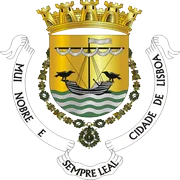Spanning the vast expanse of the Tagus River estuary, the Vasco da Gama Bridge stands as a testament to human ingenuity and Portugal’s commitment to modernization. This architectural wonder, named after the famous Portuguese explorer, has become an iconic symbol of Lisbon’s skyline since its inauguration in 1998.
At an impressive 17.2 kilometers (10.7 miles) in length, the Vasco da Gama Bridge holds the title of the longest bridge in Europe, connecting the northern and southern regions of Portugal’s capital city. Its construction was a monumental undertaking, requiring the expertise of engineers, architects, and construction workers from around the world.
The bridge’s design is a marvel in itself, combining functionality with aesthetic appeal. Its sleek, cable-stayed main span stretches gracefully across the water, supported by towering concrete pylons that reach heights of up to 155 meters (509 feet). The deck of the bridge, wide enough to accommodate six lanes of traffic, seems to float effortlessly above the river, offering drivers breathtaking views of the surrounding landscape.
But the Vasco da Gama Bridge is more than just a pretty face. Its construction involved cutting-edge engineering techniques and materials to ensure its durability and safety. The bridge was built to withstand extreme weather conditions, including strong winds and seismic activity, which are not uncommon in the region. In fact, it’s designed to withstand an earthquake up to 4.5 times stronger than the devastating 1755 Lisbon earthquake.
The bridge’s impact on Lisbon and Portugal as a whole cannot be overstated. Prior to its construction, the only way to cross the Tagus River was via the 25 de Abril Bridge, which had become increasingly congested over the years. The Vasco da Gama Bridge not only alleviated this traffic problem but also opened up new possibilities for urban development and economic growth in the areas it connected.
Moreover, the bridge has become a source of national pride for the Portuguese people. It stands as a symbol of the country’s ability to tackle ambitious projects and compete on the global stage. The bridge’s completion in time for the 1998 Lisbon World Exposition further cemented its status as a landmark of modern Portugal.
Despite its many benefits, the Vasco da Gama Bridge has not been without controversy. Environmental concerns were raised during its construction, particularly regarding its impact on local bird populations and the delicate ecosystem of the Tagus estuary. However, efforts were made to mitigate these effects, including the creation of new habitats for displaced wildlife.
As with many large infrastructure projects, the bridge’s construction also came with a hefty price tag. The total cost of the project was estimated at around 897 million euros, a significant investment for a country of Portugal’s size. Nevertheless, many argue that the long-term economic benefits and improved quality of life for Lisbon’s residents have more than justified the expense.
Today, the Vasco da Gama Bridge continues to serve as a vital transportation link for Portugal, carrying an average of 50,000 vehicles per day. It has also become a popular tourist attraction, with many visitors making the journey across the bridge to admire its engineering prowess and take in the panoramic views of Lisbon and the Tagus estuary.
As Portugal looks to the future, the Vasco da Gama Bridge stands as a shining example of what can be achieved through vision, determination, and engineering excellence. It serves not only as a physical connection between two parts of a city but also as a bridge to Portugal’s future – a future built on innovation, progress, and a willingness to dream big.
The Vasco da Gama Bridge stands as a testament to modern engineering and architectural prowess. Spanning the Tagus River in Lisbon, Portugal, it has significantly improved transportation and connectivity in the region since its opening in 1998. As the longest bridge in Europe, it not only serves a practical purpose but also stands as a iconic landmark, symbolizing Portugal’s maritime heritage and its commitment to progress. The bridge’s impact on local commerce, tourism, and urban development has been substantial, cementing its place as a crucial piece of infrastructure for Lisbon and the surrounding areas. Its durability and design ensure that it will continue to play a vital role in Portugal’s transportation network for generations to come.

